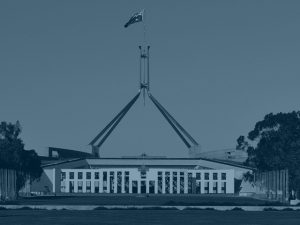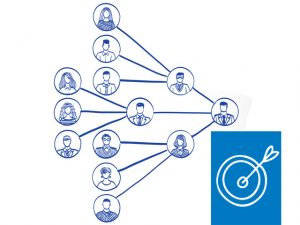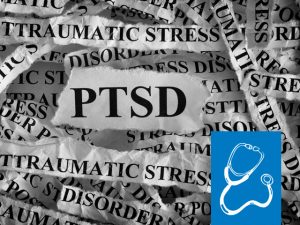Many of us will face stressful situations in life but some will also face intensely stressful events which may leave them shaken, upset and unable to cope in the long run.
This condition, known as Post Traumatic Stress Disorder (PTSD), may seem worlds away from advice but any adviser who has worked with emergency services workers, those in the military and even those who have suffered traumatic accidents will know its effects.
This edition of the Waiting Room, provided once again by our colleagues at Unified Healthcare Group, looks at what PTSD is, what causes it and how it can be treated.
We all experience stress from time to time. We get stressed when there is an imbalance between the demands being made on us, and our resources to cope with those demands. The level and extent of stress a person may feel depends a great deal on their attitude to a particular situation. An event that may be extremely stressful for one person can be a mere hiccup in another person’s life. Stress is not always a bad thing. Some people thrive on stress and even need it to get things done.
When does stress become a problem?
When the term ‘stress’ is used in a clinical sense, it refers to a situation that causes discomfort and distress for a person and can lead to other mental health problems, such as anxiety and depression. A traumatic event (e.g. life-threatening situation) can also initiate a stress reaction that, if symptoms persist, can lead to mental health conditions such as an Acute Stress Disorder (ASD) and Post Traumatic Stress Disorder (PTSD). Both of these conditions are formal mental health conditions, requiring specific criteria to be met in order to make the diagnosis.
Acute Stress Disorder (ASD)
Acute stress disorder (ASD) is characterized by stress reactions that may occur in the initial month after a person is exposed to a traumatic event. The traumatic event is an intense event that involves serious injury or death, or the chance of serious injury or death. ASD include symptoms of intrusion (recurrent, involuntary and intrusive distressing memories of the event), negative mood, dissociation (altered sense of reality or the inability to remember an important aspect of the event), avoidance (efforts to avoid distressing memories, thoughts or feelings about the event), and arousal (sleep disturbance, irritability, problems with concentration).
ASD typically presents with severe levels of re-experiencing and anxiety in response to reminders of the recent trauma. These reactions tend to be readily activated by many occurrences and situations. This will often lead to generalized fear, vigilance for further threats, and active avoidance of situations that stimulate recollections of the trauma.
The prevalence of ASD after a traumatic event has been estimated at between 5 and 20%. ASD can be diagnosed three days after the traumatic event; however, delaying the diagnosis until a week after the event may better identify patients who can be effectively treated and are at higher risk of developing post traumatic stress disorder (PTSD).
Post Traumatic Stress Disorder (PTSD)
If the symptoms of ASD persist for more than one month, the diagnosis of PTSD can be made. Most individuals who develop PTSD experience its onset within a few months of the traumatic event. However, studies have found that approximately 25% experience a delayed onset after six months or more.
Most individuals who experience trauma react to some degree when experiencing reminders of the trauma. Patients with PTSD, however, experience marked cognitive, affective (mood), and behavioural responses to stimuli, leading to flashbacks, severe anxiety, and fleeing or combative behaviour. These individuals compensate for such intense arousal by attempting to avoid experiences that may begin to elicit symptoms. This can result in emotional numbing, diminished interest in everyday activities, and, in the extreme, may result in detachment from others.
What are the chances of getting PTSD?
An analysis from a large survey across multiple countries estimated the conditional probability of PTSD for the following traumatic events1:
- Sexual relationship violence – 33% (e.g., rape, childhood sexual abuse, intimate partner violence).
- Interpersonal-network traumatic experiences – 30% (e.g., unexpected death of a loved one, life-threatening illness of a child, other traumatic event of a loved one).
- Interpersonal violence – 12% (e.g., childhood physical abuse or witnessing interpersonal violence, physical assault, or being threatened by violence).
- Exposure to organized violence – 3% (e.g., refugee, kidnapped, civilian in war zone).
- Participation in organized violence – 11% (e.g., combat exposure, witnessing death/serious injury or discovered dead bodies, accidentally or purposefully caused death or serious injury).
- Other life-threatening traumatic events – 12% (e.g., life-threatening motor vehicle collision, natural disaster, toxic chemical exposure).
Co-occurring conditions
Psychiatric comorbidity is high in patients with PTSD. Research suggests that 16% have one coexisting psychiatric disorder, 17% have two psychiatric disorders, and 50% have three or more1. Depressive disorders, anxiety disorders, and substance abuse are two to four times more prevalent in patients with PTSD. Substance abuse is often due to the patient’s attempts to self-medicate symptoms. Approximately 20% of people with PTSD have reported use of alcohol or other substances to reduce tension.
Evidence suggests that exposure to traumatic events and PTSD are associated with a range of physical health conditions including bone and joint, neurologic, cardiovascular, respiratory, and metabolic disease. Studies have also found that PTSD is associated with higher rates of:
- Autoimmune and endocrine disorders
- Obesity, food addiction, and type II diabetes in women
- Alzheimer’s and vascular dementia
- A systematic review found associations between PTSD and possible biological markers of accelerated aging, as well as with earlier mortality.
- Traumatic brain injury (TBI) and PTSD have high rates of co-occurrence among civilians and, particularly, among soldiers with combat-related TBI. As an example, 11% of American soldiers returning from combat in Iraq and Afghanistan were reported to screen positive for PTSD in 2008. Among returning soldiers with mild TBI, 62% screened positive for PTSD.
How is PTSD treated?
PTSD is treated with one or both of the following:
- Counselling: therapies may include:
- Cognitive therapy, in which you learn to change thoughts about the trauma that are not true or that cause you stress.
- Exposure therapy, in which you talk about the traumatic event over and over, in a safe place, until you have less fear.
- Eye movement desensitization and reprocessing (EMDR), in which you focus on distractions like hand movements and sounds while talking about the traumatic event.
- Medication: selective serotonin reuptake inhibitors (SSRI’s) are a type of antidepressant medication that is sometimes effective in treating people with PTSD. People usually start feeling better after they have been on medicine for a few weeks.
Prognosis
PTSD is commonly a chronic condition, with only one-third of patients recovering at one-year follow-up and one-third still symptomatic ten years after the exposure to the trauma. Individuals with one or more PTSD symptoms are more likely to experience occupational problems, have poorer social supports, and have more disability than people without PTSD. PTSD may increase the risk for attempted suicide. Individuals with PTSD have higher rates of problems in intimate relationships, including marital difficulties, compared with people without PTSD.
For Advisers
As an adviser, you may not consider PTSD to be an issue among your clients unless they are employed in the emergency services, the military or other high risk and dangerous occupation,
However, mental health support group Beyond Blue estimates in any one year about a million Australians will suffer some form of PTSD and about 12% of the population will experience it in the course of their lives. These numbers are consistent with those from the World Health Organisation which found that in 21 countries surveyed more than 10% of respondents were exposed to a serious traumatic event in their life.
As an adviser it is useful to understand the difference between ‘day to day’ stress (See Riskinfo eMagazine Edition 22) and acute and extreme stress and how the later fall under many TPD policies.
Given its debilitating effects on those suffering from this condition, being aware that life insurance can both help with its impact and its treatment is another area in which financial advisers can provide support and information when a client applies for a policy and when making a claim.
References:
- Sareen, J. Posttraumatic stress disorder in adults: Epidemiology, pathophysiology, clinical manifestations, course, and diagnosis. Up to Date. Topic 500; Version 22.0. Dec 2015.
Accessed at www.uptodate.com - Bryant, R. Acute stress disorder in adults: Epidemiology, pathogenesis, clinical manifestations, course and diagnosis. Up to Date. Topic 14616; Version 5.0. Dec 2014.
Accessed at www.uptodate.com

The Waiting Room looks at of some of the common medical conditions which advisers may come across when dealing with clients.
Unified Healthcare Group serves Australia’s financial services industry by providing a one-stop solution for all medical requirements associated with life insurance claims and underwriting.
Contact or follow the author: Telephone: 1300 558 583 | Website | Email | LinkedIn












